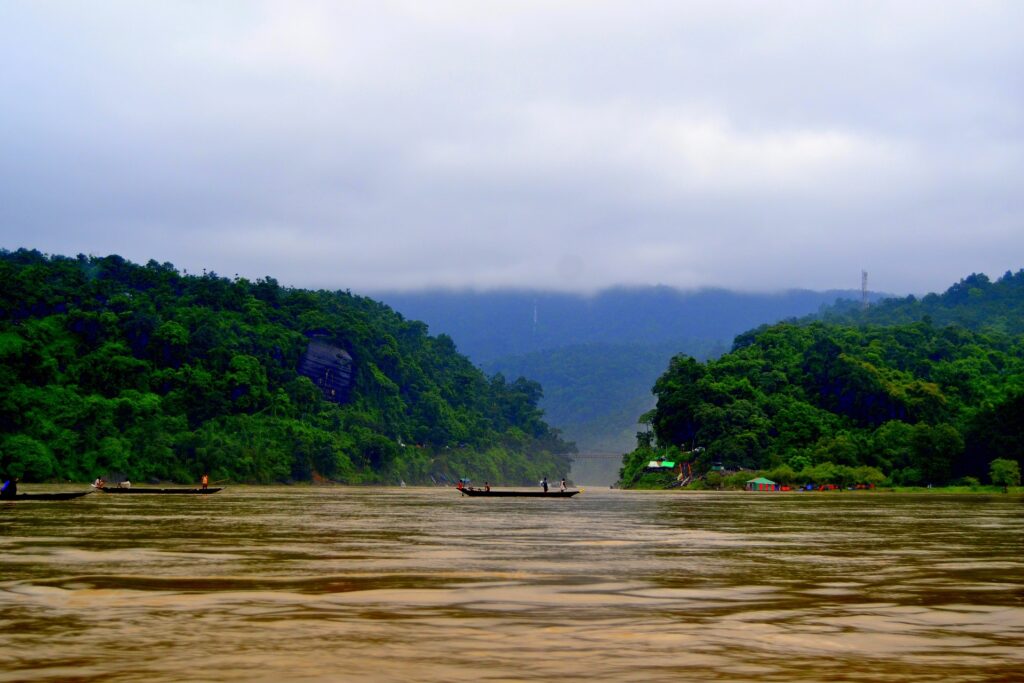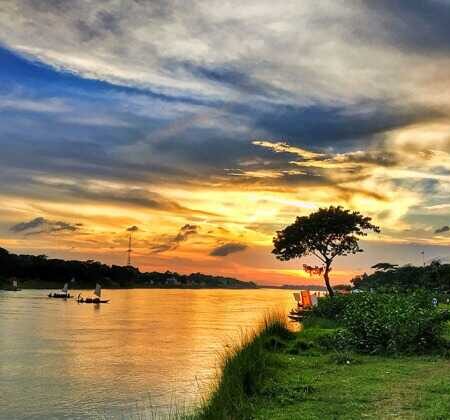Bangladesh has a unique climate, with six distinct seasons throughout the year. These seasons are called Grisma (summer), Barsha (monsoon), Sharat (autumn), Hemanta (pre-winter), Shita (winter), and Basanta (spring).

Grisma, or summer, typically lasts from March to June and is marked by high temperatures and humidity. This is the hottest time of the year in Bangladesh, and people often take measures to stay cool, such as drinking plenty of water and staying in the shade.
Barsha, or monsoon, begins in late June and brings heavy rainfall to the country. This season can sometimes cause flooding in low-lying areas, but the rainfall also provides much-needed relief from the heat of the summer.
Sharat, or autumn, is a pleasant season that lasts from September to October. The weather is cooler and drier during this time, making it a popular time for outdoor activities.
Hemanta, or pre-winter, is a short season that lasts from November to December. The weather during this time is cool and dry, with some fog and mist.
Shita, or winter, is the coldest season in Bangladesh, lasting from December to February. Temperatures can drop as low as 10 degrees Celsius (50 degrees Fahrenheit) in some parts of the country, and people often wear warm clothing and use heaters to stay warm.
Basanta, or spring, is the final season of the year in Bangladesh. It lasts from March to April and is marked by warm weather and the blooming of flowers. This is a time of renewal and new beginnings, as the country emerges from the cold of winter.
Six Season Name and Details
Bangladesh experiences six distinct seasons throughout the year, each with its own unique characteristics and weather patterns.
1. Summer season (Grisma)
The summer season in Bangladesh typically lasts from March to June, with temperatures reaching as high as 39-40 degrees Celsius (102-104 degrees Fahrenheit) in some parts of the country. This is the hottest time of the year in Bangladesh, and the high temperatures and humidity can make it difficult for people to be outdoors for extended periods of time.
During the summer season, people in Bangladesh often take measures to stay cool, such as drinking plenty of water, staying in the shade, and wearing loose, light-colored clothing. Many people also use fans or air conditioning to help cool their homes and workplaces.
Despite the heat, the summer season is also a time of celebration in Bangladesh. The Bengali New Year, known as Pohela Boishakh, is celebrated on the first day of the Bengali calendar, which falls in mid-April. This holiday is marked with parades, music, and dance, as well as traditional foods such as panta bhat (a dish made from fermented rice) and hilsha fish.
The summer season in Bangladesh also brings the threat of severe weather, such as thunderstorms and heavy rainfall. Monsoon season typically begins in late June, bringing relief from the heat as well as heavy rainfall that can sometimes cause flooding in low-lying areas. Overall, the summer season in Bangladesh is a time of intense heat and potential weather challenges, but also of cultural celebration and coming together with loved ones.
2. Rainy season (Monsoon)
The monsoon season in Bangladesh typically begins in late June and lasts until September. This season is marked by heavy rainfall and often brings relief from the heat and humidity of the summer. However, the monsoon season can also bring challenges, such as flooding in low-lying areas and disruptions to transportation and daily life.
During the monsoon season, people in Bangladesh often take precautions to protect their homes and belongings from the heavy rainfall. This can include reinforcing roofs and building walls, as well as moving valuables to higher ground.
Despite the potential challenges, the monsoon season is also a time of beauty in Bangladesh. The rain brings a freshness to the air and helps to cool down the hot temperatures of the summer. The monsoon season also brings new growth to the country’s plants and crops, providing an important source of food and income for many people.
3. Autumn Season (শরৎকাল) Sharat
The autumn season in Bangladesh typically lasts from September to October. This season is characterized by cooler, drier weather and is a popular time for outdoor activities. The weather during this time is generally mild and pleasant, making it a great time to explore the country’s natural beauty.
During the autumn season, the temperatures in Bangladesh begin to cool down after the hot, humid summer. The weather is generally sunny and dry, with temperatures ranging from 20-25 degrees Celsius (68-77 degrees Fahrenheit). This makes it a comfortable time to be outdoors and enjoy activities such as hiking, picnicking, and sightseeing.
The autumn season is also a time of change in Bangladesh, as the country transitions from the rainy monsoon season to the cooler, drier winter. This is a time of renewal, as the leaves on the trees begin to change color and the country’s plants and crops are harvested.
4. Pre-winter Season (হেমন্তকাল) Hemanta
The pre-winter season in Bangladesh, also known as Hemanta, typically lasts from November to December. This is a short season that is characterized by cool, dry weather, with some fog and mist. The temperatures during this time are generally mild, ranging from 10-15 degrees Celsius (50-59 degrees Fahrenheit).
During the pre-winter season, the weather in Bangladesh begins to cool down further after the mild temperatures of the autumn season. This is a time when the country’s plants and trees start to lose their leaves, and the air becomes crisp and cool.
The pre-winter season is also a time of transition in Bangladesh, as the country prepares for the colder winter months ahead. People may start to wear warmer clothing and use heaters to keep warm in their homes.
Despite the cooler weather, the pre-winter season is still a time of beauty in Bangladesh. The fog and mist can create a serene, peaceful atmosphere, and the lack of leaves on the trees allows for more sunlight to reach the ground. This can make it a great time to go for a walk or hike and enjoy the natural beauty of the country.
5. Winter Season (শীতকাল) Shit
The winter season in Bangladesh typically lasts from December to February. This is the coldest time of the year in the country, with temperatures ranging from 10-15 degrees Celsius (50-59 degrees Fahrenheit) in some parts of the country. The weather during this time is generally dry and clear, with some fog and mist.
During the winter season, people in Bangladesh often wear warm clothing and use heaters to keep warm in their homes and workplaces. This can be especially important in the northern and central parts of the country, where the temperatures are colder.
Despite the colder weather, the winter season in Bangladesh is still a time of beauty and activity. The clear, dry air allows for great visibility, making it a popular time for outdoor activities such as hiking and sightseeing. The lack of leaves on the trees also allows for more sunlight to reach the ground, creating a bright and sunny atmosphere.
The winter season is also a time of cultural events and celebrations in Bangladesh. The winter festivals of Christmas and New Years are celebrated by people of all faiths, and are marked by music, dance, and traditional foods.
Spring Season (বসন্ত) Basanta
The spring season in Bangladesh typically lasts from March to April. This is the final season of the year in the country, and is marked by warm weather and the blooming of flowers. The temperatures during this time range from 15-20 degrees Celsius (59-68 degrees Fahrenheit), making it a comfortable time to be outdoors.
During the spring season, the weather in Bangladesh becomes warmer and more pleasant after the cold of winter. The air is filled with the fresh, fragrant smells of flowers, and the trees and plants begin to bud and bloom. This is a time of renewal and new beginnings, as the country emerges from the cold of winter.
The spring season is also a time of cultural events and festivals in Bangladesh. The Bengali New Year, known as Pohela Boishakh, is celebrated on the first day of the Bengali calendar, which falls in mid-April. This holiday is marked with parades, music, and dance, as well as traditional foods such as panta bhat (a dish made from fermented rice) and hilsha fish.








No Comment! Be the first one.